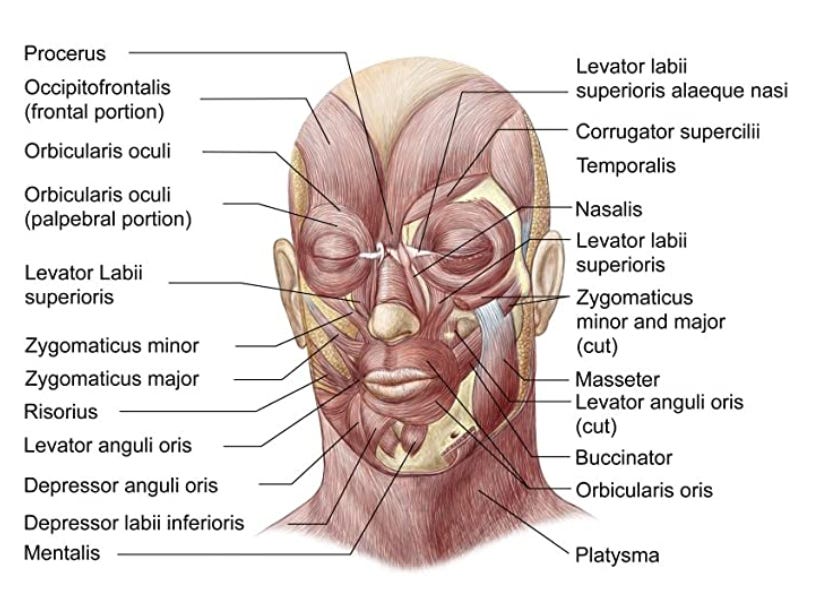What's Your Tell
you must have good cards
Tonight we are going to talk about our facial expressions. Have you ever felt like what a person speaks and their expression tell a different story? We have a lot of muscles in our face and I believe that most of what we ended up with in our bodies came along for a reason. Some of it is hard to understand when you think about it but that is another topic.
New Feature on Saturdays — What is This?
I added a recurring feature to my Saturday posts. I will share a photograph of something and see if people can guess what it is? I will look in the comments and acknowledge correct answers after 24 hours. This is not related to the post. You may have to register on Substack to leave comments. There are an amazing array of great things to read like my inspiration to join Substack. Of course, I hope you still make time for my posts.
The Inspiration
Why do some people get irritable in response to a story that moves knowledge forward? It is easy to see this even if they do not speak. Our brains have developed an ability to discern feelings. We can even tell when a particular emotion may not be genuine. Today’s title is what I am talking about. When something is presented to us that conflicts with our personal or political beliefs/truths, some people just cannot help themselves! At least in my case, hearing theories helps exercise my mind and lets me evaluate what I heard in light of other knowledge. I am skeptical by nature but am not afraid to hear different points of view. I love to meet people who do something for a living completely foreign to me. I appreciate when my social circles are not like-minded. The pandemic has made our world smaller and lonelier. :(
Back to the inspiration. I read a news story in the mid-morning today after a much better option than a trip on the treadmill. A great friend, “J”, invited me for a walk around a nearby lake in a park near our home. While it was slippery, the fresh morning air after sunrise is always a joy. When I returned from the walk, I read a news story about the impact of masks on child development. I found the story intriguing. Here is a link to an article in Scientific American about masks and development and things that can be done to compensate. You won’t see this on MSNBC or Fox as it takes too long to articulate facts versus hyperbole and a long-format story seems inconsistent with the host’s attention spans. The focus was on how the inability to see the full face inhibits the development of understanding emotion that shines through in our faces when we speak or react. Since that time, a child (“C”) of my cousin “P” shared a series of expressive photographs of her daughter. Her daughter’s expressions were priceless and she exuded comfortable and joyous in each of the shots.
The Setup
An author that I have mentioned in previous posts is Malcolm Gladwell. He writes some engaging books. While I have not read them all, I enjoyed Outliers, Blink, and The Tipping Point. Gladwell’s background is as a columnist for the Atlantic magazine since 1995. Tonight’s post starts with his observations in Blink about how our minds make decisions and read faces. A lot of what he accomplishes in his writing is taking a complex topic and presenting it in an accessible way for the reader who doesn’t want to go through a sequence of psychology reading. He also has an engaging PodCast that can be pretty entertaining and thought-provoking.
Anyone who has watched suspense or crime movies recalls dramatic scenes where someone gets hooked up to a lie detector apparatus. Knowledge of some parlor trick allows them to “beat the test”. Results of lie detector testing are inadmissible as evidence and considered unreliable. I am approaching my limit of understanding about the topic but it seems mostly the primitive test measures physiological responses like sweating, and heart rate for example. I expect it will remain part of the movies for years to come.
It has been reported that some organizations have adopted using different techniques to assess truthfulness (and all sorts of other things). These newer approaches focus on the muscles in our faces and how they are “wired” into our brains and are fired based upon certain emotions. As you can note from the picture above, we have a lot of muscles in our face, and decoding such things, as a result, gets pretty complex. If we only had two muscles in our face, there wouldn’t be a large number of combinations of those muscles being in tension. Unfortunately, we have a lot more than two. Luckily, mathematicians come to the rescue again and can help us unravel the mathematics of the combinations.
Another area of life where the reading of faces is discussed is poker. The card game Texas Hold ‘Em has become a fixture on television with people playing for large prizes. The part I enjoy is the length that some of the participants go to wear hoodies and prominent sunglasses all to hide their protruding muscles in their necks, their eyes, and any insight into many of their facial muscles. Many of them look like the FBI sketch of the Unabomber. People’s habits in response to playing cards are referred to as a tell. My joke with my family was always that if our dog Denny played cards, you would know he had good ones when his tail started to wag. One of my favorite memories was playing cards at a cabin with our family and my inlaws. At a critical point, my father-in-law noted one of my sons playing next to him and wearing swimming goggles to “hide his tell”. Grandpa turned to my son “N” and said ‘I cannot see your eyes, but I can see your cards’. I think we all remember that as a funny moment.
The Details
Humans have 43 muscles in their faces. The rise of emojis as an important part of our communication has exposed many of us to faces that portray certain emotions. I am not claiming the use of emojis is necessarily insightful but it reinforces the point of today’s post. Before reading Gladwell’s book, I had read about the applicability of those facial muscles and their associations with emotions. Growing up in the 1960s, the Walt Disney Company was already hard at work creating animated classics. In retrospect, there was a remarkable number of people at desks drawing scenes to piece together the frames of a motion picture. Even then there was a lot of money to be made in the movies. Methods and techniques changed through the years but the biggest breakthrough was relatively recently with a company named Pixar. When you watch movie credits, especially Pixar films, you will notice a lot of people with the title “rigger”. This is where the magic happens. Here is the video I watched on the treadmill that partly inspired today’s post.
George Lucas of Star Wars fame was the founder of this innovative firm originally named the Graphics Group in 1979 as part of his LucasFilms operation. The company was spun off independently in 1986 and was controlled by the co-founder of Apple, Steve Jobs. Eventually, it was sold to Walt Disney. I am sure that all of you have a favorite Pixar movie.
Now I am going to coax you to click. This is not clickbait but I think you will be happy if you do. The article linked here with some accompanying videos will reveal what the Duchenne marker is. I found it fascinating. For those of you who remain skeptical, I am a tech-optimist. These innovations are genuinely are already in the wild in our entertainment. Integration of this sort of technology is just around the corner as witnessed by this humanoid robot at the Consumer Electronic Show 2022. The genie is out of the bottle!
Here are some examples that are fun to kick around

Here’s today’s song medley from one of the inspirations of today’s post.




Feel free to respond here if you have a guess at what tonight's mystery photo is